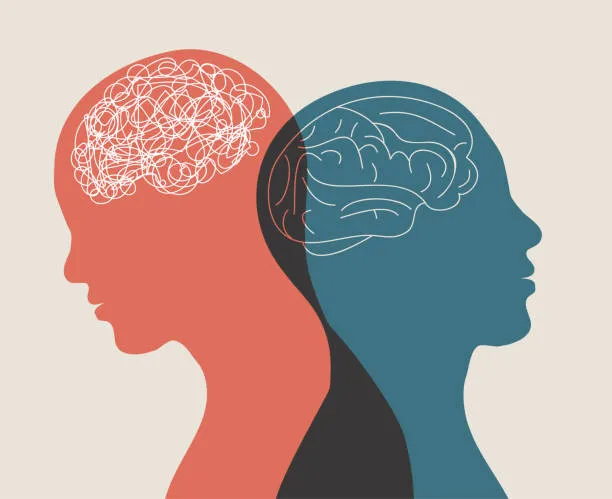Recognizing the Signs: It’s Time to See a Doctor for Joint Pain
Joint pain is a common ailment affecting millions worldwide. Many people will experience some form of joint discomfort at various points in their lives, whether due to aging, injury, or underlying health conditions. But when does joint pain warrant a visit to the doctor? This blog post aims to guide you through understanding when joint pain could be a sign of something more serious and when to consult a medical professional.
Understanding Joint Pain
Joint pain can be a mild annoyance or a debilitating condition, depending on its cause and severity. The experience of joint pain varies widely, from occasional aches to constant discomfort. Joint pain can be caused by a range of factors, including injury, arthritis, infections, or even cancer. Recognizing the type of joint pain you’re experiencing is the first step in determining the appropriate course of action.
Different types of joint pain often mirror specific conditions. For instance, osteoarthritis typically results in stiffness and aching in the hips, knees, or hands, particularly after physical activity. Rheumatoid arthritis, on the other hand, may cause a warm, swollen feeling in the joints, often accompanied by fatigue and fever. Understanding these distinctions is crucial in identifying the underlying cause of your discomfort and seeking the appropriate care.
While some joint pain may resolve on its own with rest or over-the-counter medications, persistent or severe symptoms should not be ignored. Ignoring joint pain can lead to worsening conditions and an increased risk of long-term damage. The key is recognizing when the pain has reached a level that requires professional evaluation.
Types of Joint Pain
There are various types of joint pain, each with distinct characteristics and symptoms. Understanding these can help you determine the nature of your discomfort.
Osteoarthritis is the most common form of arthritis, affecting millions worldwide. This degenerative disease occurs when the protective cartilage that cushions the ends of bones wears down over time. Its symptoms include stiffness, pain, and loss of flexibility in the affected joints, commonly the knees, hips, and hands.
Rheumatoid Arthritis (RA), unlike osteoarthritis, is an autoimmune disorder where the immune system attacks the lining of the joints. RA can lead to painful swelling, and if untreated, it can cause joint deformity. Morning stiffness that lasts for hours and symmetrical joint involvement are hallmark signs of this condition.
Gout is another type of arthritis characterized by sudden, intense pain and swelling in the joints, often the big toe. Gout occurs due to excess uric acid in the bloodstream, leading to crystal formation in the joints. Gout attacks can be sporadic but severe, requiring medical intervention for relief and management.
These are just a few examples of joint-related ailments. Other conditions like lupus, fibromyalgia, and bursitis also present unique joint pain profiles. Understanding the type of pain you’re experiencing is vital in determining the urgency of medical consultation.
When to See a Doctor
Determining when to see a doctor for joint pain is crucial in preventing long-term damage. While some discomfort might be manageable at home, certain symptoms should prompt immediate medical attention.
First, if you experience joint pain accompanied by swelling, redness, or warmth, it’s time to consult a doctor. These symptoms might indicate an infection or inflammatory condition like rheumatoid arthritis. Additionally, if there are neurological symptoms such as numbness or tingling, consult a neurologist, such as those in Tulsa.
Second, if joint pain is persistent, lasting more than a few weeks without improvement, a medical evaluation is warranted. Chronic pain could signal a degenerative condition such as osteoarthritis, which requires ongoing management.
Finally, if joint pain is severe enough to limit your ability to carry out daily activities or affect your quality of life, seek medical help. A doctor can perform tests to identify the underlying cause and offer treatment options to alleviate the pain and restore functionality.
Monitoring these symptoms and taking action when necessary can prevent further complications and improve your overall health and well-being.
Home Care and Lifestyle Changes
For mild joint pain, home care and lifestyle adjustments can provide relief and prevent further deterioration. Here are some strategies you can try at home:
First, consider incorporating regular low-impact exercise into your routine. Activities like swimming, walking, or cycling can improve flexibility and strengthen the muscles around your joints, reducing the strain on them. Exercise also helps maintain a healthy weight, which is crucial in minimizing joint stress, particularly in weight-bearing joints like the knees and hips.
Second, applying a hot or cold compress can reduce inflammation and alleviate pain. Heat therapy can soothe stiff joints and relax muscles, while cold therapy can numb pain and decrease swelling. Experiment with both to see which provides the best relief for your symptoms.
Lastly, a balanced diet rich in anti-inflammatory foods such as fruits, vegetables, and omega-3 fatty acids can support joint health. Limit processed foods and sugar, which can contribute to inflammation. Staying hydrated is also essential, as adequate water intake lubricates joints and aids in overall physical function.
These lifestyle changes may help manage mild joint pain, but they are not substitutes for medical treatment if your symptoms persist or worsen.
The Role of a Doctor
Consulting a doctor for joint pain is essential for accurate diagnosis and effective treatment. Early intervention can prevent irreversible joint damage and improve your quality of life.
A doctor will conduct a thorough examination, considering your medical history and symptoms. Diagnostic tests such as X-rays, MRIs, or blood tests may be ordered to identify the underlying cause of your joint pain. Accurate diagnosis is the first step in developing a personalized treatment plan.
Treatment options vary based on the cause and severity of the joint pain. They may include medications like anti-inflammatories or pain relievers, physical therapy, or even surgery in severe cases. Your doctor will work with you to determine the best approach to manage your pain and improve joint function.
Engaging with a healthcare professional ensures you receive the proper guidance and support in managing your joint pain. Their expertise is invaluable in navigating the complexities of joint-related conditions.
Conclusion
Joint pain is a prevalent issue that can greatly affect your daily life. Recognizing the right moment to seek medical attention is vital for preventing long-term damage and preserving joint health. By understanding the various types of joint pain and their associated symptoms, you can more easily identify when professional assistance is necessary. While home care and lifestyle modifications may offer relief for mild discomfort, persistent or severe symptoms should prompt a consultation with a doctor. Prioritizing your joint health is crucial, and seeking early intervention can lead to more favorable outcomes. Remember, your health is your most valuable asset—don’t overlook the signals your body is sending you.
Keep an eye for more news & updates on Buzz Released!






